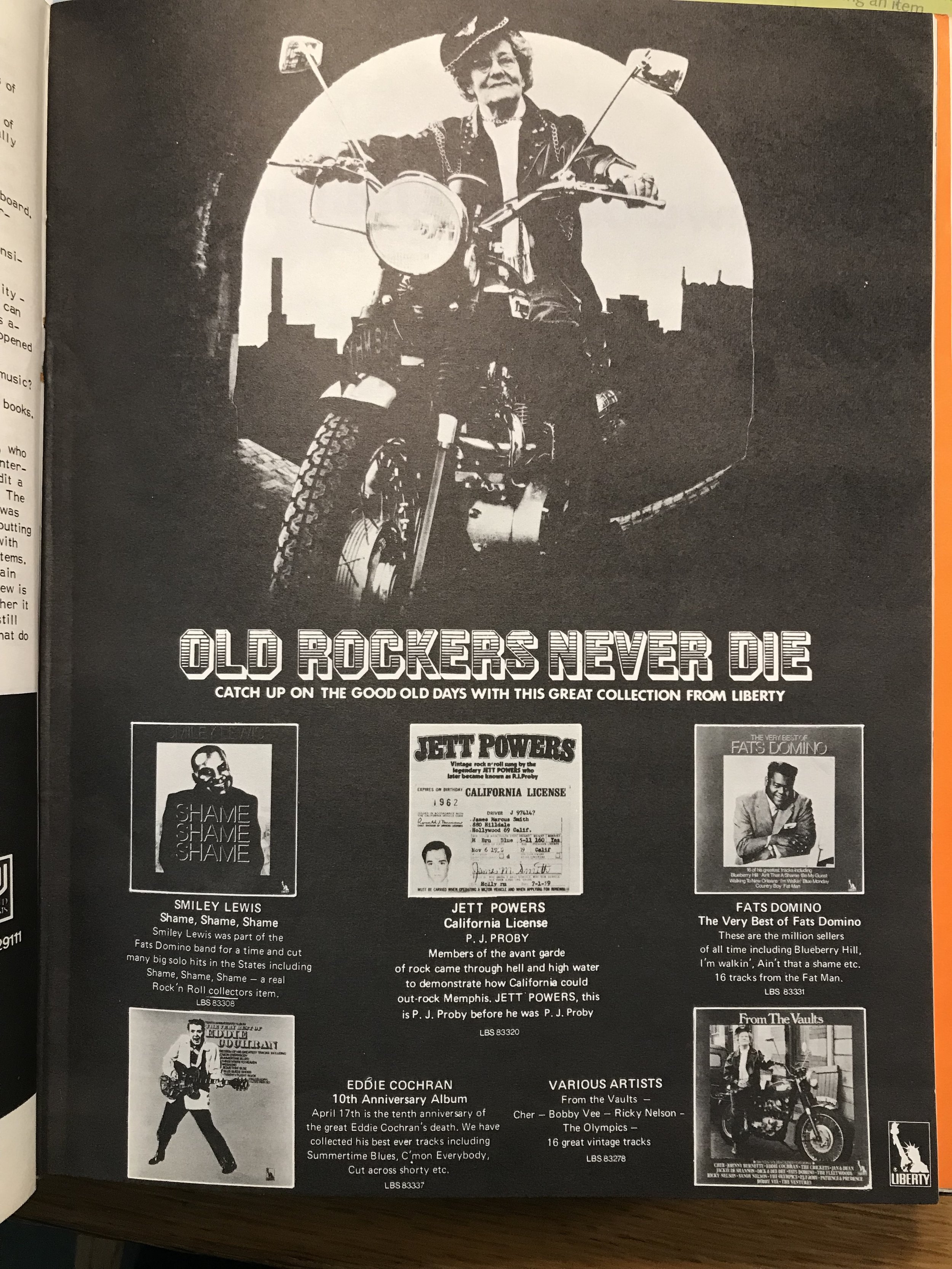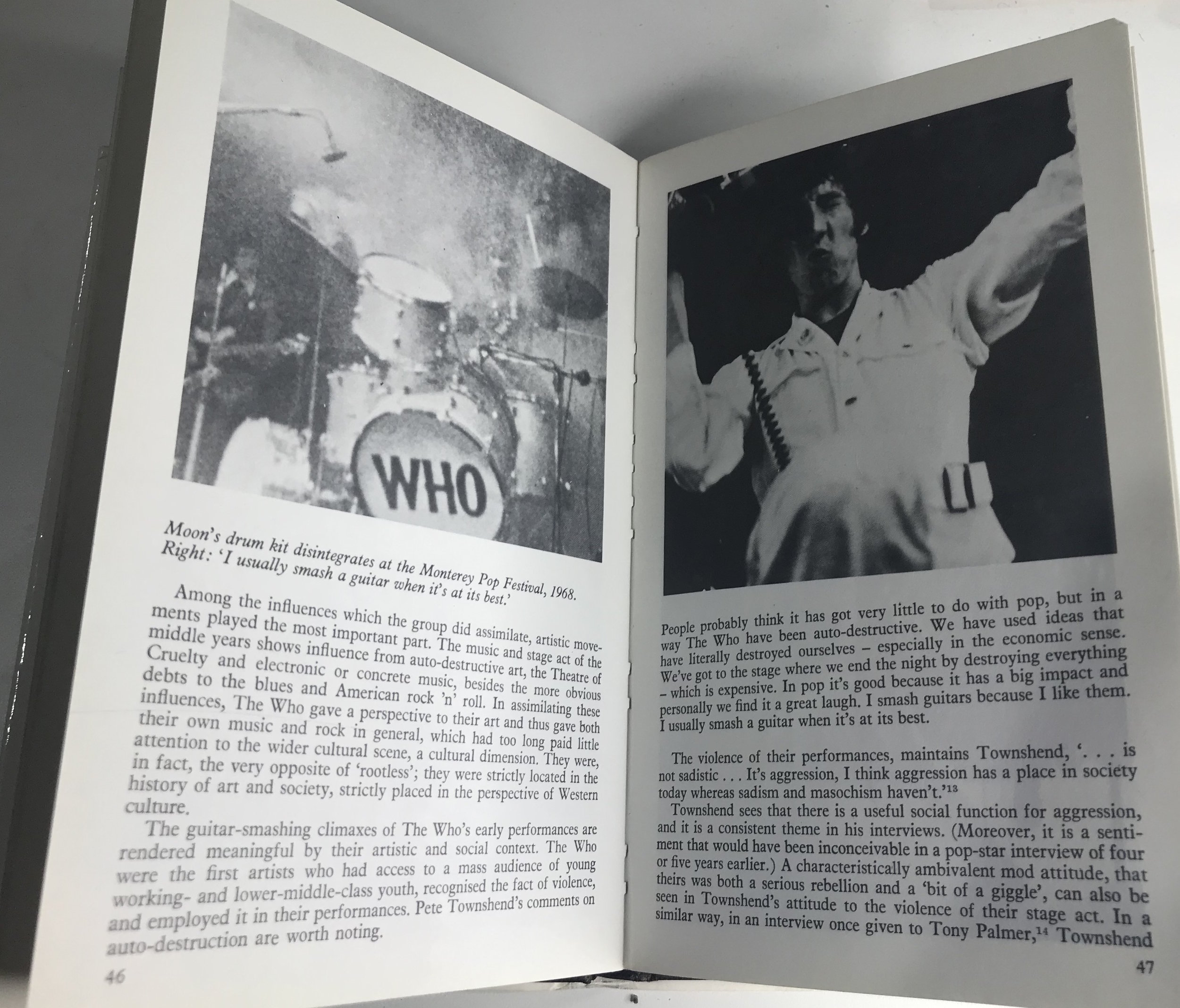On cover and format alone this looks to be just another exploitation title, a George Tremlett style cut n’ paste job to capitalise on Shaky’s chart success, but it is so much more than that. The first 3/4 are a first hand account of the Sunsets’ story written by their card-carrying Communist manager, Paul ‘Legs’ Barrett. It is a terrific account of the early 1970s rockin’ scene, the gigs and the band’s high expectations and low returns as they endless tour the UK and Europe taking their message to the people. And if you wanna know why so many of the revivalist discs suck, you’ll get the real dope here - no advance, no royalties, minimal recording time in cheap shit studios, and producers who were good at harvesting a fast buck and hopeless at the task they were paid to carry out.
When the band confront Lionel Burge, head of Contour Records (who released some Sunsets sides and LPs by The Houseshakers and Hellraisers), about getting paid directly rather than their funds being channelled through producer Donny Marchand, he tells them to agree to his way or he’ll get the Hellraisers in to make the album. What could you do? asks Barrett. In the end, the records helped them get gigs and that was where the money was and, eventually, good money too.
After 7 years of playing the circuit the band come to an end, killed not by Shaky jumping ship for the Elvis Musical in 1977 but by a new generation of rockers. Barrett tries to sell the band to Island Records’ A&R man, Richard Williams, but tells him, ‘Sorry I think you’re too old. I’m gonna sign Eddie and the Hot Rods instead.’ He then tries Danny Seconda at Track records, who are excited about having The Heartbreakers (if you don’t stare too long you can kinda see a potential synergy between the two bands), and tells the Sunsets to get some new clothes at the expense of the company. off they go to a King’s Road emporium, reserving themselves suede jackets, cowboy boots and fancy shirts’ and then they wait on the company to stump up. . . it never does. Tapes are made with Charlie Gillett, Vic Maile, and Mike Hurst, none are ever released. By the time Track does do something with Shaky he’s gone solo – the Sunsets are long gone . . . and that synergy with Johnny Thunders no longer looks so good.
Barrett stories are worth the price of admission alone, but it’s his depiction of Shaky that is the real draw. He paints him as naive, vain, semi-literate, overly sensitive and just plain dumb. Payback is a motherfucker, as they say, and Legs gets in a bank vault full. Is he bitter? The book’s final sentence:
To quote Paul Barrett, who has been watching Shaky’s career with the caring, concerned interest of a colleague who has been a friend, ‘he’s got what he always wanted, but he’s almost certainly lost what he had.’


















































